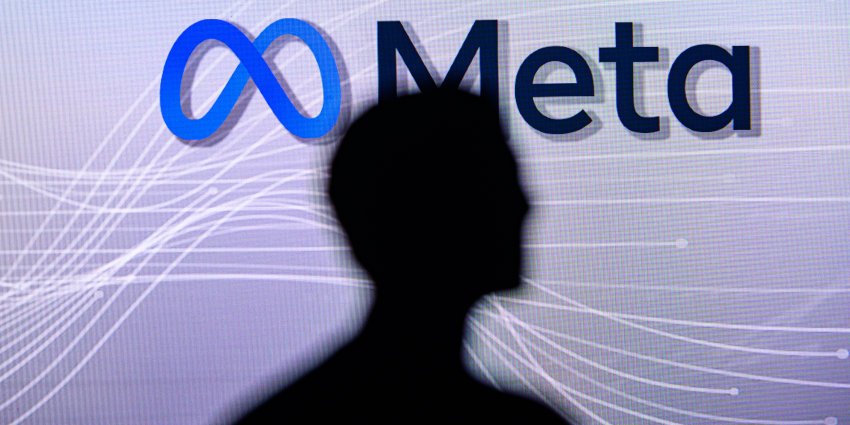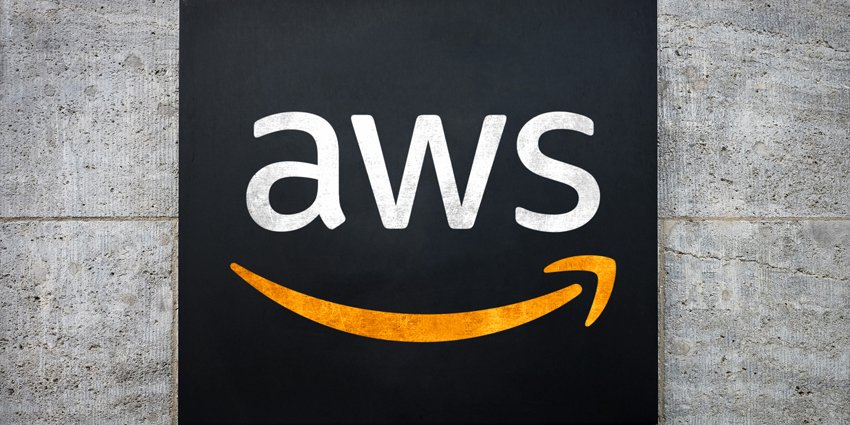[ad_1]
Here we go again… we breathe another heavy sigh as the mainstream media writes another cliche article on the Metaverse. Bogged in the mire and fog of misinformation, the mainstream media has delivered its Two Minutes Hate at Mark Zuckerberg, CEO and Founder, Meta for the sole purpose of clout chasing.
This time, it’s the BBC. Tech reporter James Clayton has stepped forward to ask his audiences if people ‘remember the Metaverse.’
The reporter then picks the low-hanging fruit of Meta Platforms — the shadowy organisation with a very visible brand in the metaverse market — and equates it with the entire metaverse itself.
In a predictable manner, Clayton wrote in his opinion piece,
“For a while [the Metaverse] dominated tech news. A virtual reality world that would be so immersive, so engaging, that we would want to spend part of our lives in it […] No one could accuse [Zuckerberg] of a lack of ambition.
Continuing, he wrote,
“But almost two years on, Zuckerberg’s vision of the metaverse is in trouble […] On Wednesday the company holds its annual VR event called Meta Connect. It’s a chance, perhaps, for Zuckerberg to again explain his reasoning for taking an extremely profitable social media company and diverting its focus to an extremely unprofitable VR venture”
Speaking further on the matter, he explained that Meta had lost a “staggering” $21 billion USD since 2022. Reflecting on long-term investment, Clayton acknowledges the company “wasn’t expecting short-term returns.”
Hinting that there was “very little evidence that this enormous punt will work,” he noted that Horizon Worlds had claimed it had 300,000 monthly users.
It was “tiny when compared to the billions of people on Facebook and Instagram,” he said. Adding, he cited user reviews that the worlds were empty and lacked enough people to “make it fun.”
Clayton’s observations of the allegedly poor graphics on Horizon Worlds and Meta’s lack of a Quest headset refresh were not “anything close to the vision” Zuckerberg had outlined.
He wrote: “To put it bluntly, VR is still fringe. It’s not the way most people play games, and it definitely isn’t how most people choose to spend their time. Real life is stubbornly appealing.”
“The metaverse, then, is still very much alive at Meta – but most of the rest of the tech world appears to have moved on,” Clayton concluded.
The Allegory of the Cave and Metaverse Journos
This article has a lot to note as it demonstrates that the BBC should rethink its presentation of the news.
The article is written in the spirit of Plato’s Allegory of the Cave, where journalists, chained to their preconceived notions of the Metaverse, spend their existence learning about it through the shadows on the wall, rather than by simply speaking to the companies building it. It’s much safer to presume than to explore with this methodology.
Additionally, by conflating Meta with the Metaverse, it disparages the efforts of the whole industry.
Thankfully, Zuckerberg, Andrew Bosworth, VP of Reality Labs, and Nick Clegg, Meta’s VP of Global Affairs, have consistently stated Meta is not the Metaverse. Rather, the company is simply building the technologies to support it.
Meta, indeed, continues to make critical mistakes. However, such is the nature of experimentation and the quest to realise the fullest potential of its spatial computing empire.
I have fully detailed my stance on Meta Platforms and the Metaverse and encourage readers to check it out. For this article, we’ll spend more time on the new questions raised.
It’s no easy feat, but we will have to digest it in small bites. Let’s dig in.
Meta Quest 3: The Quest to Win Us Over?
Again, the article comes just ahead of the Meta Connect 2023, where Meta will unveil their Quest 3 headset.
This will become a substantial source of revenue for the firm’s consumer and enterprise-facing user base, similarly to the Quest 2, which debuted in September 2020.
The Quest 2 remains the top-selling headset of all time, despite making few hardware changes and significant software changes. Meta has upgraded passthrough, hand and eye tracking, avatar technologies, security controls, and connectivity features, among many others.
Notwithstanding, the Quest 2 has consistently outsold all other headset manufacturers combined at 49 percent of sales. It continued to do so as headset sales dropped 33 percent in this year’s first fiscal quarter (Q1 2023).
Clayton cited Counterpoint Research’s report on headset sales at the time of reading but has since removed it from the article.
The research found that the company had not significantly refreshed the Quest 2’s hardware in over two years, leading to a drop in sales in Q1. Sony’s PSVR 2 — a gaming VR console — launch helped to bolster total VR sales for the quarterly figures, with HTC VIVE’s XR Elite also contributing financially to XR’s overall revenue health.
Whilst Q1 was a slow quarter for XR, this year’s Q3 and next year’s Q1 reports will set the stage for the Quest 3 and Apple Vision Pro’s respective performances. These devices have created a buzz on the XR and Metaverse markets unlike anything seen before.
Much of this is due to the hardware enhancements and possibilities for developing metaverse technologies. Many experts from across the XR landscape have commented on the future potential of the device, and it has been consistently referred to as a game changer for the new spatial communications platform.
Regarding the Quest 3, it is expected to continue these successes with massively upgraded specifications compared to its predecessor.
XR and Profit Losses, Explained
It is very convenient for journalists and analysts to criticise tech firms for losing money while creating infrastructure for the Metaverse. XR Today has, on multiple occasions, analysed why these profit losses become such a huge part of the product life cycle.
Meta Platforms already acknowledged them in its Q1 report,
“We anticipate our full-year 2023 total expenses will be in the range of $88-91 billion, increased from our prior range of $86-90 billion due to legal-related expenses recorded in the second quarter of 2023. This outlook includes approximately $4 billion of restructuring costs related to facilities consolidation charges and severance and other personnel costs. We expect Reality Labs operating losses to increase year-over-year in 2023”
Overall, Meta has lost $3.7 billion for Q1, which is massive, but not unexpected.
In a previous article, we explained why this is so: the research and development (R&D) needed to manage hardware, software, and product innovations is one of the largest incurred expenses for the company.
These struggles are the growing pains experienced whilst transforming a company’s operations to a technology predicted to mature in a minimum of ten years’ time. Many governments are working with businesses to increase the research and development expenditure credit (RDEC) needed to provide relief for the soaring costs of R&D.
Tax credit research firm Leyton explains further in a report,
“Examples of eligible expenses include consumable items, contributions to independent R&D costs, externally provided workers, payments to clinical trial participants, software staff and subcontractor costs”
Many of these costs now include green capex, or capital expenses linked to creating sustainable products.
However, the BBC journalist fails to mention Meta posted an overall 11 percent increase in revenues compared to the same period last year. This is despite losing crucial funds due to Apple’s privacy policy change, surging the company’s stocks around 159 percent at the time.
The company also needs to surmount the Herculean task of recouping ad revenues, which it has directed towards its Meta Ad Reels platform due to protests over launching ads in-headset. Meta is also preparing for its Quest 3 launch, which has become a significant source of R&D capex as it prepares for launch.
This is notwithstanding transnational data flow disputes with Europe’s General Data Protection Regulation (GDPR) framework and reconsidering its strategy to boost adoption rates with new use cases.
We’re Not Here to (Just) Play Games
Returning to the original point: Analysts should avoid equating the Metaverse with the consumer Metaverse. There are infinite metaverses, and the consumer-facing one will perform and grow at its own pace.
Journalists like Clayton and many others have committed the ‘grievous sin’ of projection. Essentially, his article states, “My metaverse, the consumer metaverse, is the centre of all metaverses.”
This shows, especially to businesses and firms developing XR solutions, a rather immature mentality of what the Metaverse entails.
It is similar to “My dog’s better than your dog” jingle from the 1950s, where we can substitute children clutching their adorable golden retriever puppies for journalists clasping at their narrow visions of the consumer metaverse.
Meanwhile, the industrial metaverse is taking off astronomically in the real world, with companies like Siemens, Meta, Microsoft, HTC VIVE, Varjo, NVIDIA, Qualcomm, Unity, Epic Games, and many others developing it.
Governments are currently mulling their own metaverses, including ones for their militaries. Additionally, three of the largest verticals cited by companies are sports, entertainment, and education.
In fact, Meta has already teased this with several strategies, including collaborating with BMW, organising a 15-university-strong immersive learning initiative, and joining the Metaverse Standards Forum, XR Association, and a handful of other consortiums to build best practices for the communications platform.
The Metaverse and Tangible ROI
Simply put, there is a massive amount of work to do before allowing the Metaverse to thrive. It’s more than the ‘connected worlds’ journalists imagine the average consumer will frolic around within their articles.
A metaverse is a living, organic environment of data, linked spatially to the physical world. It is not merely a game.
This revolution will take time. Often, this will entail companies building the Metaverse without immediate benefits or return on investment. Despite building virtual worlds, XR firms operate in the material and need tangible ROI from their clients to continue upscaling these technologies for consumer and enterprise use.
Furthermore, the market is not at the convergence point where device form factors have shrunk to allow people to use them for longer periods comfortably. Nor have people found reasons to use the Quest or Vision Pro to replace functions commonly held by the smartphone or laptop computer.
However, with luck, the Meta Quest 3 and Apple Vision Pro release could potentially turn this around. Regarding the first, it offers an affordable $500 USD price tag, 40 percent slimmer form factor, massive processing upgrades, better passthrough and greater availability of games and applications.
With the latter, despite costing $3,500, many will still buy the Apple Vision Pro due to its unrivalled conceptual design, ecosystem interoperability and features, lightning-fast proprietary processors, and controllerless functionality.
Conclusions
Personally, I believe the industry is at the precipice of breaking into the mainstream. Unlike previous attempts, the quality and innovation of current and upcoming devices have triggered unprecedented dialogue on our Metaverse future.
Whilst reading Luis Bravo Martin’s magnum opus ‘Metaversed,’ he raises an incredibly important point about the Metaverse most companies hope to achieve.
In it, he said,
“We’ll start to move from a primarily heads down (mobile phone) experience to a heads-up (glasses) one. We will move from a sit-down interaction to a walk-around one. We won’t be relying on computers or tablets nearly as much, or at all. We will be increasingly wearing our metaverse access technology and it will increasingly become a seamless part of our everyday lives”
Think about the magnitude of this feat and what it will require to achieve. It will certainly take two decades, not years, to reach. Furthermore, the Metaverse reflects the wearer, the data they access, and the personas they create.
In the book, Martins cites a 2016 speech from Klaus Schwab, Chairperson, World Economic Forum, on the rise of the Fourth Industrial Revolution — the massive global digital transformation set to remake the world.
He said at the time,
“We stand on the brink of a technological revolution that will fundamentally alter the way we live, work, and relate to one another. In its scale, scope, and complexity, the transformation will be unlike anything humankind has experienced before. We do not yet know just how it will unfold, but one thing is clear: the response to it must be integrated and comprehensive, involving all stakeholders of the global polity, from the public and private sectors to academia and civil society”
This is why we cannot throw simplistic articles at the gravity of this undertaking. The Metaverse is one of many verticals in the Fourth Industrial Revolution that will take considerable time, energy, and resources to create.
I have spoken to countless metaverse companies sitting on the precipice of full profitability for their ingenious solutions. Some of the biggest obstacles to this are the development of use cases, empirical data, and scalability.
I would like to believe that the Metaverse is like a child to raise, rather than a white elephant project. We should celebrate each of its milestones, learn from its mistakes, and use those previous failures to improve in the future.
In all stages of its development, just like a child, there will be good and bad times, lessons in self-improvement, moments that test one’s patience, feelings of failure, and even more so, moments of exaltation.
This is not just Zuckerberg’s burden, but the challenge all XR firms face — and it will take the entire XR community to raise this child.
[ad_2]




